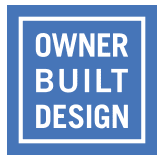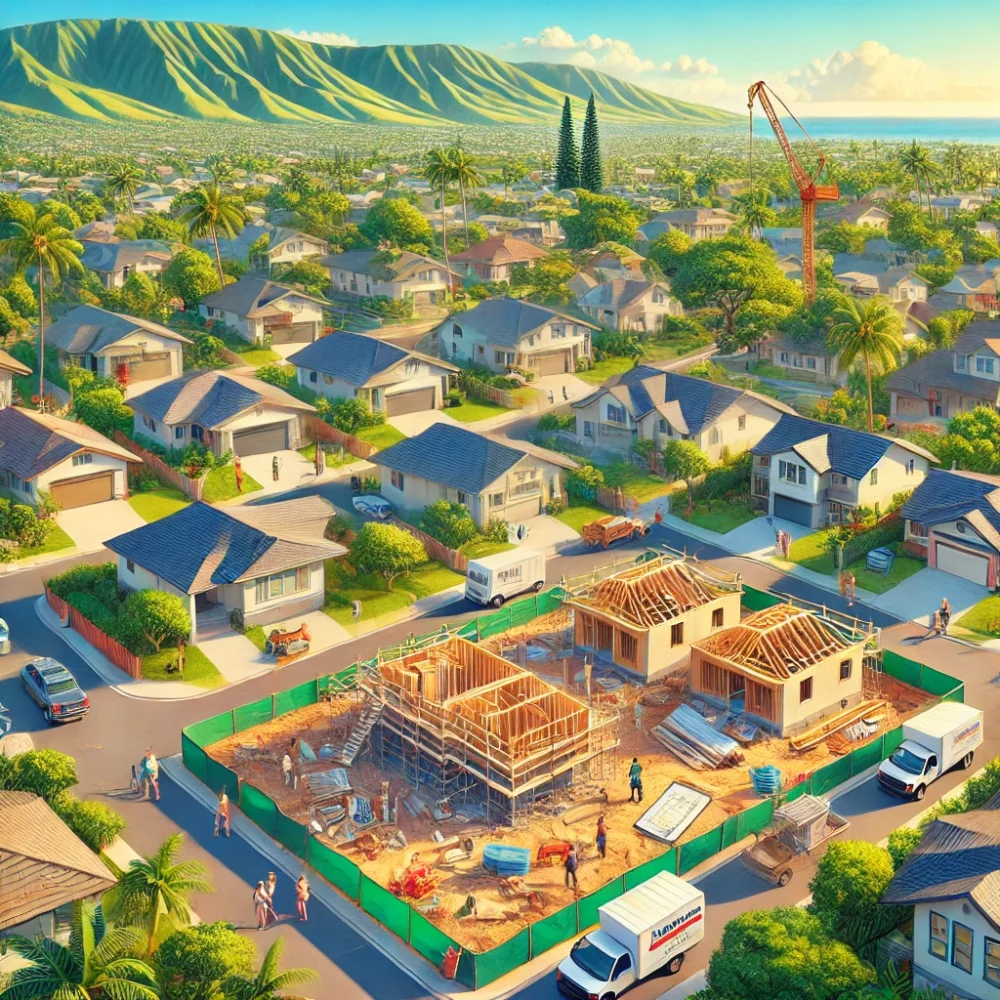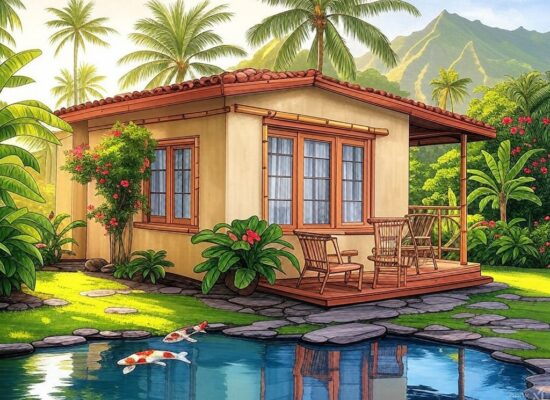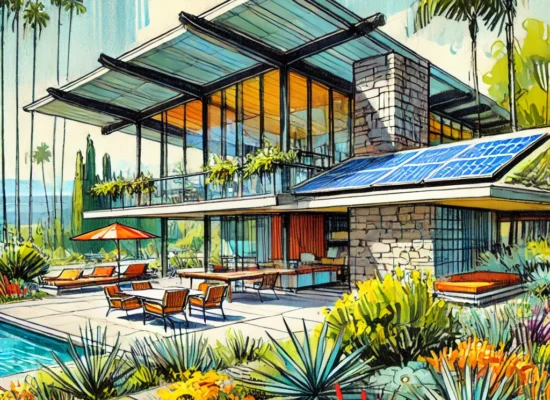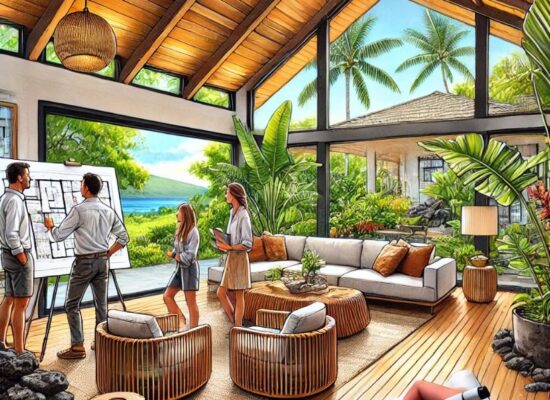Introduction
Hawaii stands at the threshold of a transformative era in construction and housing. By 2029, the state faces a projected shortfall of over 20,000 housing units, intensifying the urgency for innovative and sustainable development solutions. Fueled by progressive policies, a surge in infrastructure investments, and innovative design solutions, Hawaii is poised to address its long-standing housing crisis. Yet, this promising horizon is not without challenges—rising costs, regulatory complexities, and environmental concerns present obstacles that demand strategic navigation. This article dives deep into the economic forecasts, legislative impacts, and market trends shaping Hawaii’s construction industry, offering insights into how builders, developers, and homeowners can seize opportunities while mitigating risks.
The Economic Landscape: National and Local Drivers of Growth
Nationwide, infrastructure investments and regulatory reforms are driving construction activity. Federal programs are channeling billions into public works, renewable energy, and housing, creating ripples of opportunity across all states. Hawaii, with its unique market dynamics and environmental sensitivities, is particularly well-positioned to benefit.
Hawaii’s own economy, projected to grow steadily through 2029, is fueled by public and private investments in infrastructure and sustainable development. The surge in building permits—from $2.9 billion in 2023 to a staggering $13 billion in 2024—signals heightened confidence in the market. This remarkable growth reflects not only economic resilience but also the urgency to address housing shortages across the islands.
The Rise of ADUs: A Path to Affordable Housing
In 2024, Hawaii passed transformative legislation aimed at expanding Accessory Dwelling Units (ADUs) as a solution to the housing crisis. Senate Bill 3202 mandates that counties increase ADU allowances on residential properties in urban districts by 2026, unlocking new opportunities for homeowners. Additionally, Hawaii County Bill 123 allows up to three ADUs per property, each up to 1,250 sq. ft., provided they are designated for long-term rentals.
These changes are reshaping how families approach housing. In East Honolulu, for example, families have embraced ADU construction to house aging relatives, providing affordable and culturally appropriate housing solutions. For homeowners, ADUs present opportunities to generate passive income while contributing to the state’s affordable housing supply. Yet, Maui and Kauai remain more restrictive, signaling the need for ongoing advocacy and tailored development strategies.
Infill Development: Unlocking Hidden Potential
Infill residential development is emerging as a sustainable solution to Hawaii’s land-use challenges. By revitalizing underutilized urban lots, infill projects reduce urban sprawl, preserve open spaces, and leverage existing infrastructure. Recent zoning reforms have eased restrictions, making it more feasible for homeowners and developers to engage in small-scale, high-impact developments. Owner Built Design champions this approach, guiding clients through design, permitting, and construction to maximize property potential and foster vibrant, connected communities.
However, challenges persist. Zoning compliance, infrastructure limitations, and environmental regulations require strategic planning and collaboration with local agencies. Yet, for those who navigate these complexities effectively, infill development offers a path toward resilient, community-centered growth.
Sustainability and Resilience: Building for the Future
Sustainable and resilient construction is no longer optional—it’s imperative. Hawaii’s commitment to carbon-neutral construction is driving the adoption of stricter energy codes, flood-resistant designs, and green building standards. Incentives for solar installations and water conservation systems are gaining momentum, further encouraging environmentally responsible building practices.
Climate resilience is especially critical for Hawaii’s coastal and flood-prone areas. Builders must design with future environmental risks in mind, integrating storm-resistant materials, elevated foundations, and erosion control measures to safeguard communities.
Challenges Ahead: Navigating Obstacles in Hawaii’s Construction Boom
Despite promising growth, Hawaii’s construction sector faces significant hurdles: The state’s unique geographic and economic conditions amplify challenges that demand thoughtful solutions. High construction costs, driven by Hawaii’s reliance on imported materials and a limited local labor force, consistently inflate project budgets. Complex permitting processes and stringent zoning laws delay project approvals, stifling development momentum. Environmental regulations, while essential for sustainability, introduce additional compliance layers that can slow progress. Addressing these barriers requires strategic innovation, investment in workforce development, and collaboration with policymakers to streamline regulatory frameworks.
Workforce Development: Addressing labor shortages is critical. Initiatives to expand Hawaii’s skilled labor force through partnerships with trade schools and apprenticeship programs can help mitigate delays and reduce construction costs.
Opportunities for Builders and Homeowners
For those ready to build, the next five years hold immense promise: Hawaii’s evolving construction landscape is opening doors for innovative designs, sustainable developments, and community-driven projects. Legislative reforms, including expanded ADU allowances and streamlined permitting processes, create new opportunities for homeowners and builders to contribute to alleviating the housing crisis. Infill development, renewable energy integration, and resilient construction practices are becoming more accessible, offering pathways to create lasting value. Seizing these opportunities requires strategic planning, local expertise, and a commitment to sustainable growth.
- Capitalize on ADU Reforms: Homeowners can create passive income streams by adding long-term rental units, while contributing to community resilience.
- Embrace Infill Development: Developers who prioritize revitalizing urban lots can foster vibrant, sustainable neighborhoods with minimal environmental impact.
- Invest in Sustainable Design: Builders adopting energy-efficient, climate-resilient practices will lead the market and attract environmentally conscious buyers.
- Leverage Expert Guidance: Navigating complex permitting and compliance processes is easier with professional support. Owner Built Design, LLC offers comprehensive services to streamline these challenges.
Conclusion: Building a Resilient, Sustainable Hawaii
Hawaii’s construction and housing markets are primed for unprecedented growth through 2029. From groundbreaking ADU legislation to the expansion of infill development and sustainable building practices, opportunities abound for builders, developers, and homeowners alike. However, success requires navigating rising costs, regulatory hurdles, and environmental challenges with strategic foresight.
By embracing innovation and sustainability while honoring Hawaii’s cultural and environmental heritage, the construction industry can create resilient communities and vibrant spaces that will stand the test of time. Those who adapt, invest wisely, and build responsibly will shape a future where Hawaii’s natural beauty and growing communities thrive in harmony.
